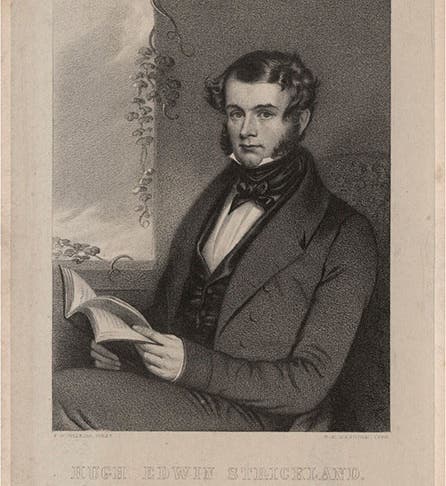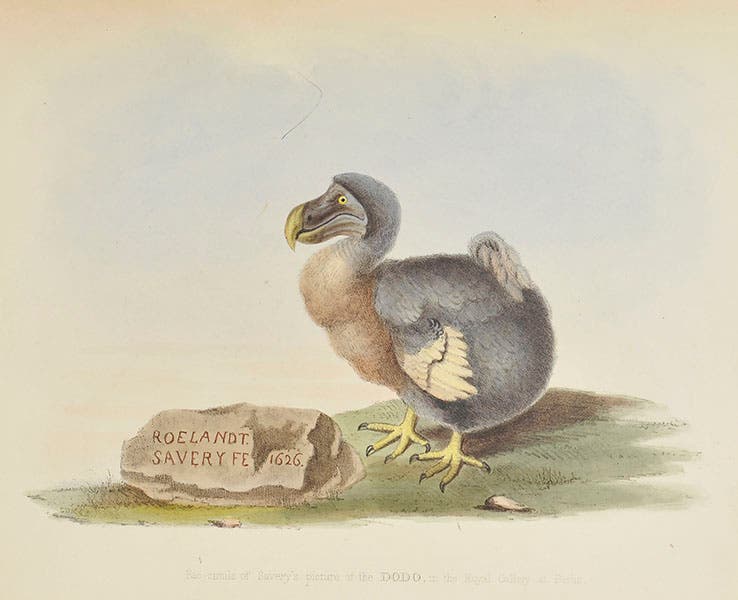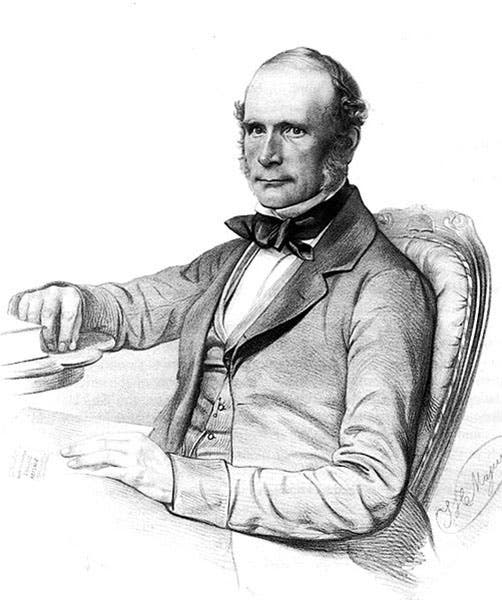Scientist of the Day - Hugh Strickland
Hugh Edwin Strickland, an English geologist and ornithologist, was born Mar. 2, 1811. Strickland headed up the world's first committee on zoological nomenclature, established by the British Association for the Advancement of Science (BAAS) in 1842, because the practice of naming new animals was badly in need of guidelines. A young Charles Darwin was a member of this committee, and Darwin was apparently so impressed with Strickland that he named him in 1844 as a possible editor for Darwin's newly penned "Essay" on the origin of species, should Darwin die from the mysterious disease that had begun to afflict him. Strickland’s editorial pen was fortunately not needed in this case. Darwin would also benefit from Strickland's efforts to found a new sponsorship organization, the Ray Society, that would help authors publish monographs that could not attract a commercial publisher. Darwin's two volumes on living barnacles were published by the Ray Society in 1851 and 1854.
Strickland had a life-long love affair with the dodo, which had been extinct for 130 years when Strickland was born. In 1848, he published an over-size book, he published an over-size book, co-written with Alexander Gordon Melville, The Dodo and its Kindred; or the History, Affinities, and Osteology of the Dodo, Solitaire, and Other Extinct Birds of the Islands Mauritius, Rodriguez, and Bourbon, with an attractive blue binding sporting a gold-embossed dodo (second and third images).
In his book, Strickland assembled some older paintings and drawings of the dodo, as well as descriptions of the physical remains that still survived. The earliest painting of a dodo had been made in 1626 by Roelandt Savery, a Dutch artist, and it was then in Berlin; Strickland chose to reproduce it for the frontispiece of his book (fourth image). Strickland does not state who copied the Savery oil painting for him, but it is a handsome hand-colored lithograph. Lithography is not well-suited for reproducing oil paintings, so we have here essentially a new creation, a much softer, and in many ways more life-like creature, than the original.
One of the other color images in the book is also a lithograph, a small dodo on a large page, with the ghosts of its extinct relatives in the background. We show you a close-up, or else the dodo would barely be visible (fifth image)
Strickland's death in 1853 came unexpectedly when he was on his way home from the BAAS annual meeting up in Yorkshire; he had taken the train, and at one of the stops he took the opportunity to examine the geology of a railway cutting. When he heard a train coming, he stepped back onto the other track, where he was struck by another train, coming from the other direction, that he didn't hear coming. He was only 42 years old. He was not the first person in England to be killed by a train, but there aren’t many ahead of him on the list.
There are two excellent printed portraits of Strickland. One, our first image, shows him in 1837, age 26; it was lithographed by Thomas Maguire after a drawing by Francis Wilkin. The other was both drawn and lithographed by Maguire and was finished in 1853, just before Strickland’s untimely demise.
Strickland was buried at St Mary Churchyard, Deerhurst, Gloucestershire. There is no gravestone that I could find, but friends and admirers later commissioned a colorful memorial stained glass window in the church, a portion of which you can see .
Dr. William B. Ashworth, Jr., Consultant for the History of Science, Linda Hall Library and Associate Professor emeritus, Department of History, University of Missouri-Kansas City. Comments or corrections are welcome; please direct to ashworthw@umkc.edu.











